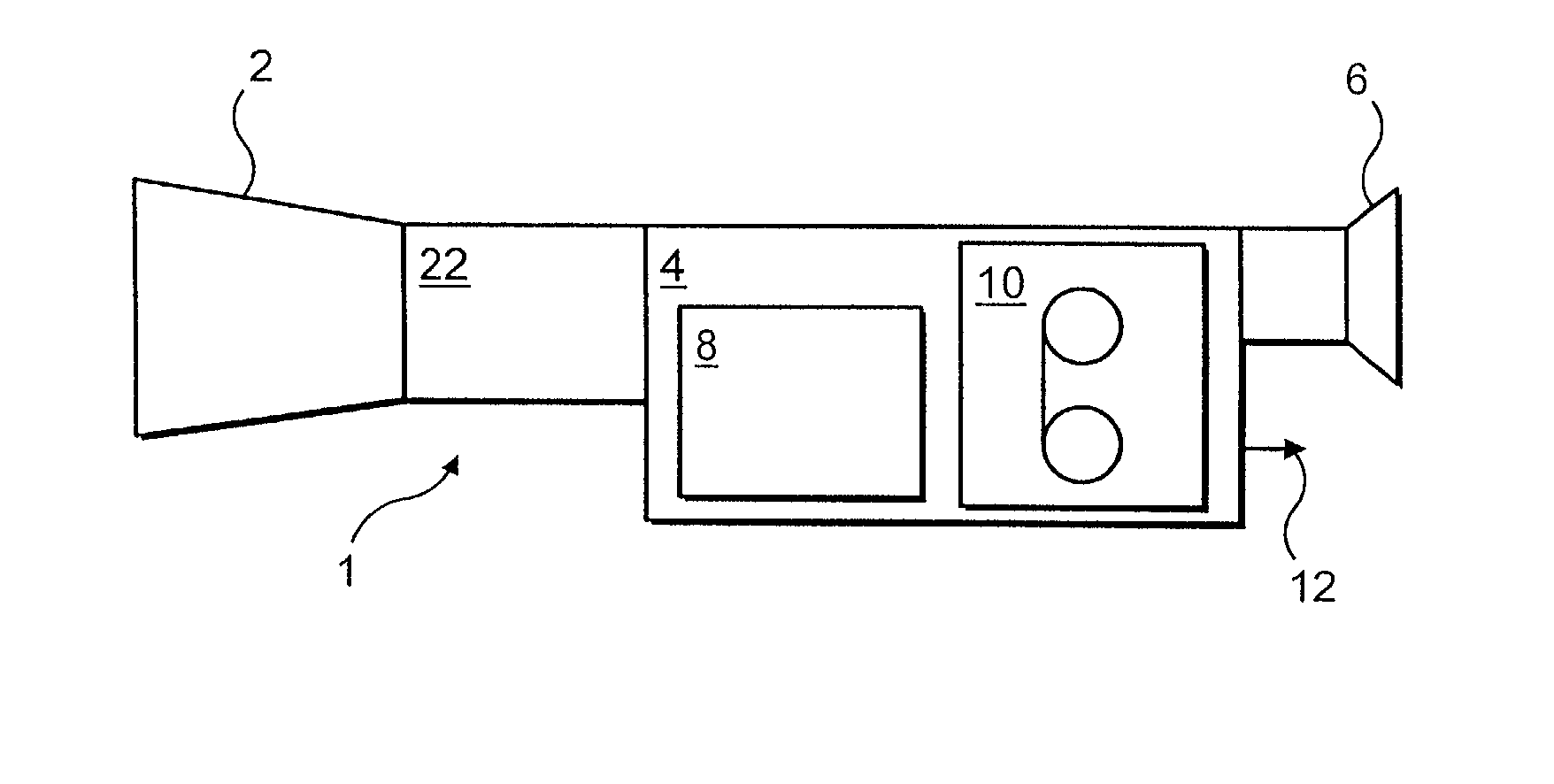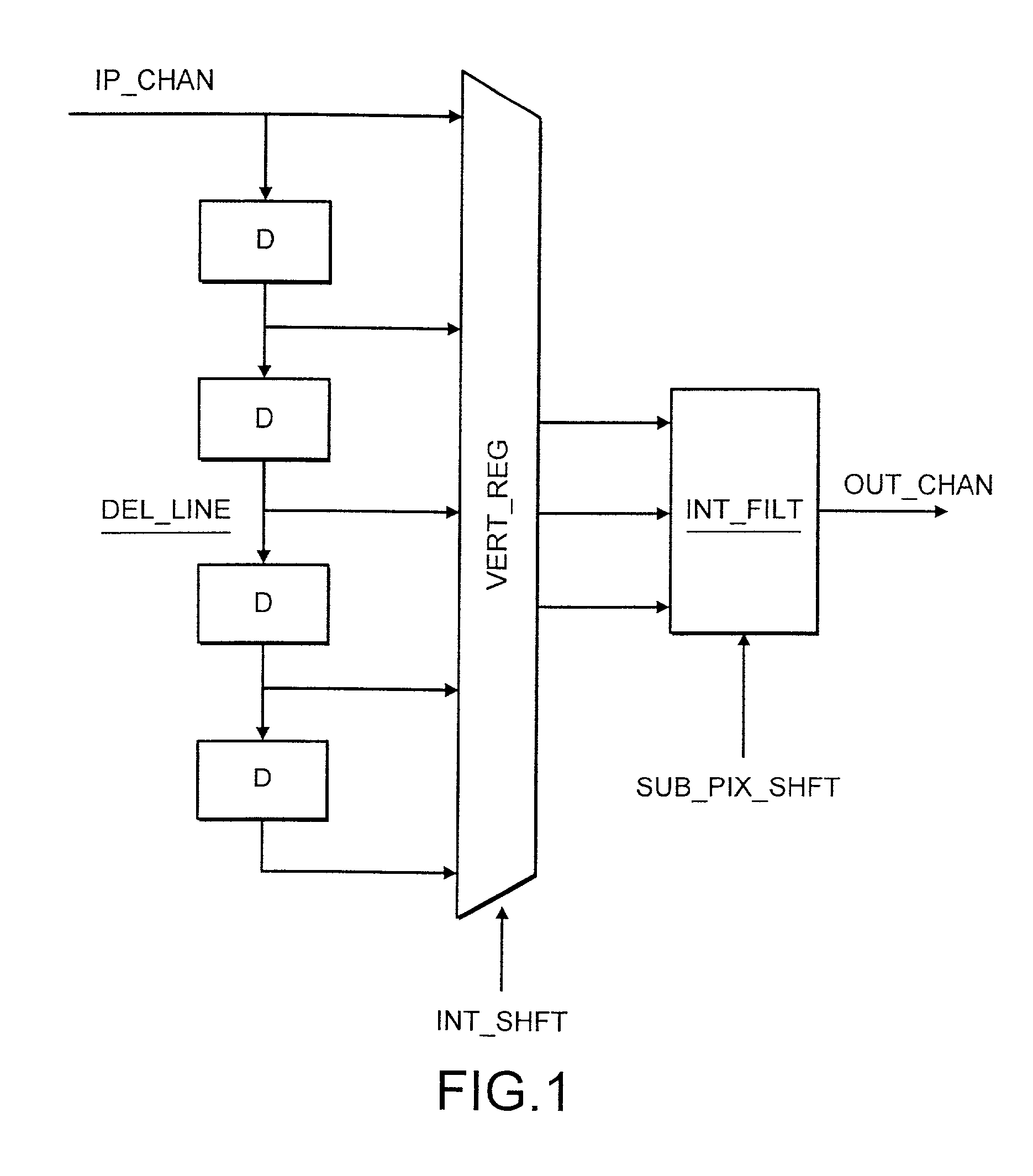Image processor and method of processing images
a technology of image processing and image, applied in the field of image processing, can solve the problems of distortion in the focused image, impaired colour image formation of the lens, and inability to form a perfect representation of the image, so as to achieve the effect of reducing the ringing and resolution loss on the diagonal edge of the image as a result of interpolation and reducing the ringing and resolution loss
- Summary
- Abstract
- Description
- Claims
- Application Information
AI Technical Summary
Benefits of technology
Problems solved by technology
Method used
Image
Examples
Embodiment Construction
[0034] Interpolation is performed in order to change the shape of an image. This could be as simple as a linear stretch, or a shape change determined in accordance with a more complicated higher order function. Using interpolation, each pixel of a new stretched image will be derived from a collection of pixels from a source image. To achieve this stretch, an image processor calculates a sub-pixel position in the source for each new pixel. This is used to control an interpolation filter. The calculation can be thought of as providing an error, or a vector with respect to which a source image can be divided into horizontal and vertical components, each of which can be independently interpolated. The error / vector has two parts, an integer shift and a fraction of an integer. The fractional integer part represents a sub pixel position within the source image. To access data at a sub pixel position, an interpolation filter is used. This requires several consecutive sample pixels of the im...
PUM
 Login to View More
Login to View More Abstract
Description
Claims
Application Information
 Login to View More
Login to View More - R&D
- Intellectual Property
- Life Sciences
- Materials
- Tech Scout
- Unparalleled Data Quality
- Higher Quality Content
- 60% Fewer Hallucinations
Browse by: Latest US Patents, China's latest patents, Technical Efficacy Thesaurus, Application Domain, Technology Topic, Popular Technical Reports.
© 2025 PatSnap. All rights reserved.Legal|Privacy policy|Modern Slavery Act Transparency Statement|Sitemap|About US| Contact US: help@patsnap.com



